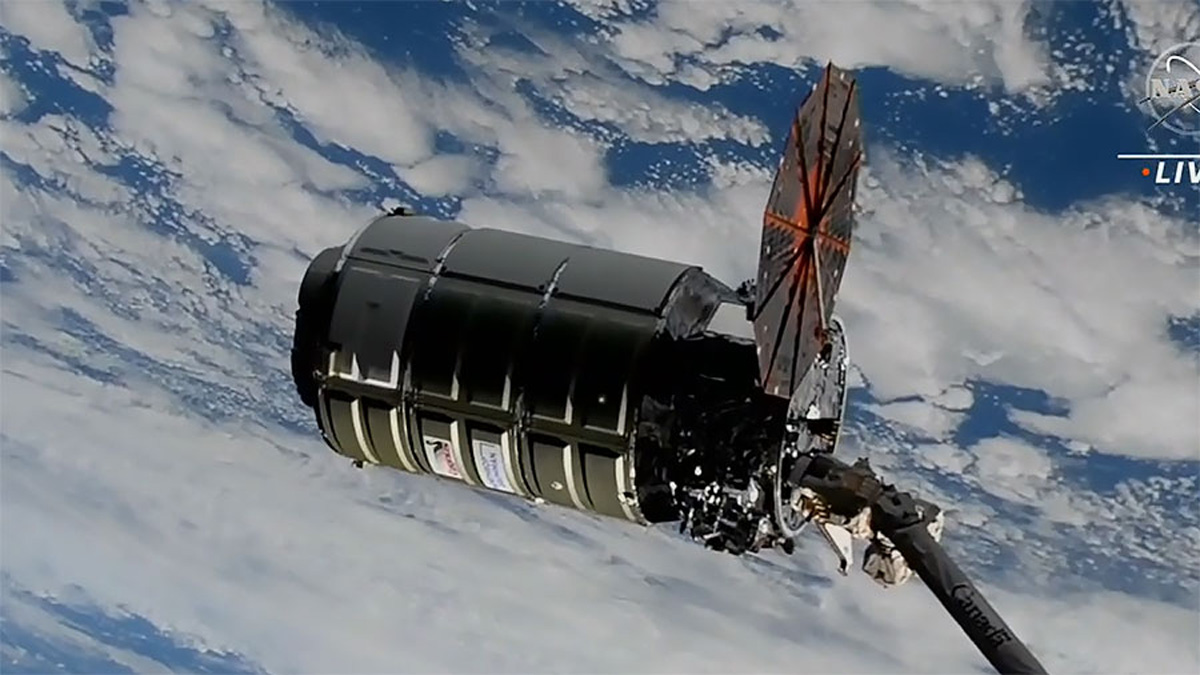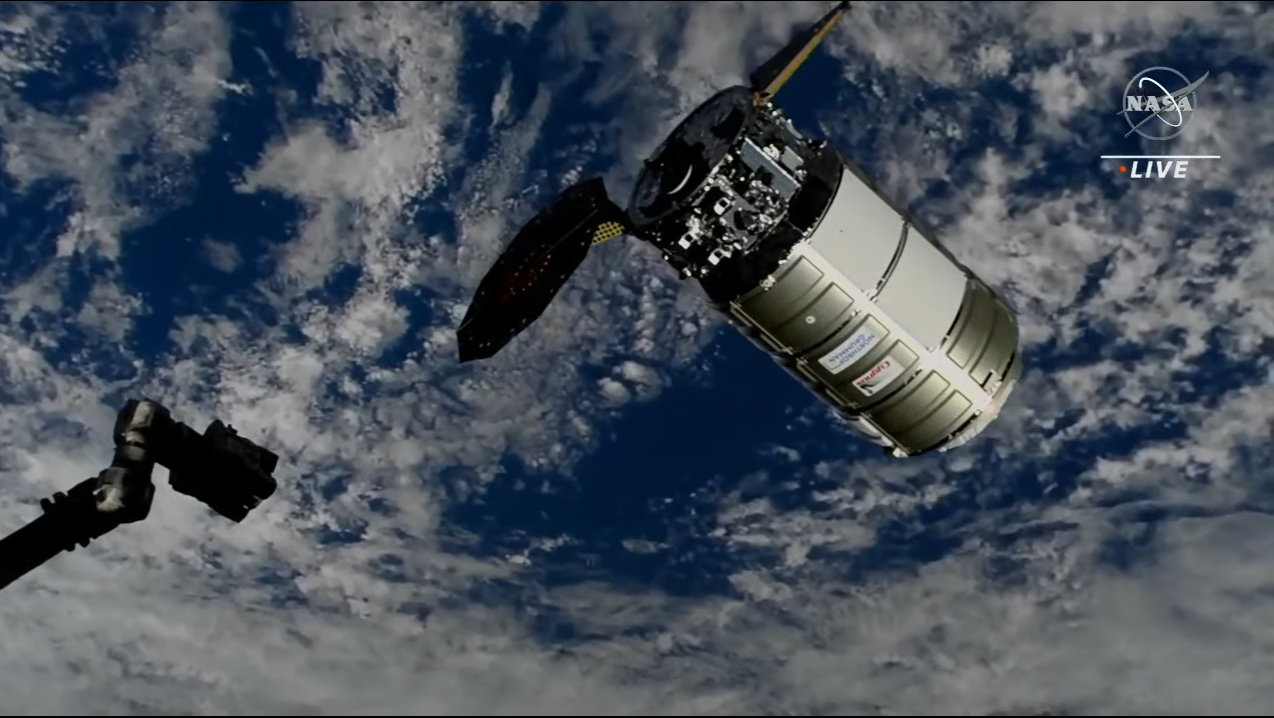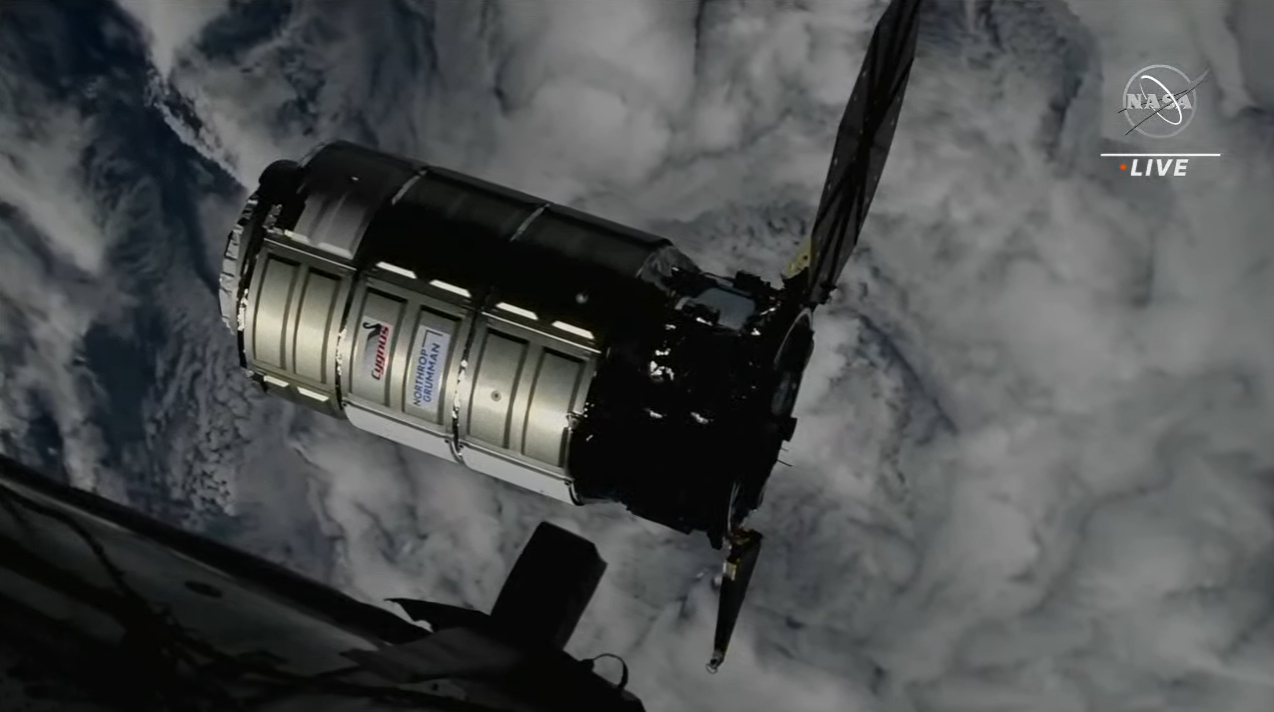Cygnus cargo ship arrives at space station with only one working solar panel
The private Cygnus cargo craft has arrived at the International Space Station early Wednesday morning (Nov. 9) despite one of its solar panels failing to deploy after launch.
NASA astronaut Nicole Mann assisted by fellow NASA crewmate Josh Cassada captured the uncrewed Cygnus spacecraft full of supplies and scientific experiments with the space station's robotic arm at 5:20 a.m. EST (1020 GMT) as the two ships sailed high over the Indian Ocean. The robotic arm will now move the capsule to the Unity module on the International Space Station (ISS), where it will be berthed to the module's Earth-facing port later today.
"A huge congratulations to the NG-18 team for their tireless efforts in getting Sally Ride to the ISS for a successful capture today," said Mann, who plucked the cargo ship from space with the station's robotic arm, radioed to Mission Control after the successful capture. The spacecraft is dubbed the SS Sally Ride after astronaut Sally Ride, the first American woman in space, who died in 2012.Mann quoted Ride's thoughts on the view from space after the capture. "We certainly agree with her, back from [low Earth orbit], the stars do not look bigger but they certainly look brighter."
Related: Antares rocket launches ovarian cells and wild experiments to ISS




The Northrop Grumman-built Cygnus robotic freighter after the famous NASA astronaut, launched toward the ISS on Monday (Nov. 7) from Virginia. Carrying a record-breaking 4.1 tons (3.7 metric tons) of scientific experiments and supplies, the spacecraft experienced technical problems shortly after launch.
The freighter managed to deploy just one of its two solar panels after liftoff. Its handlers say it can make the journey to the ISS safely regardless, but mission teams kept an eye out for any signs of trouble as it approaches the orbiting lab.
"Northrop Grumman is working closely with NASA to monitor and assess the spacecraft ahead of tomorrow's planned arrival, capture and installation at the space station," NASA officials said in an update on Tuesday evening (Nov. 8). "Mission teams also are planning additional inspections of the cargo spacecraft during approach and after capture."
Breaking space news, the latest updates on rocket launches, skywatching events and more!
Three different robotic spacecraft ferry cargo to the ISS these days: Cygnus, SpaceX's Dragon capsule and Russia's Progress vehicle.
Cygnus and Progress burn up in Earth's atmosphere after completing their delivery missions, but Dragon comes back for safe ocean splashdowns and future reuse.
Mike Wall is the author of "Out There" (Grand Central Publishing, 2018; illustrated by Karl Tate), a book about the search for alien life. Follow him on Twitter @michaeldwall. Follow us on Twitter @Spacedotcom or Facebook.

Michael Wall is a Senior Space Writer with Space.com and joined the team in 2010. He primarily covers exoplanets, spaceflight and military space, but has been known to dabble in the space art beat. His book about the search for alien life, "Out There," was published on Nov. 13, 2018. Before becoming a science writer, Michael worked as a herpetologist and wildlife biologist. He has a Ph.D. in evolutionary biology from the University of Sydney, Australia, a bachelor's degree from the University of Arizona, and a graduate certificate in science writing from the University of California, Santa Cruz. To find out what his latest project is, you can follow Michael on Twitter.

